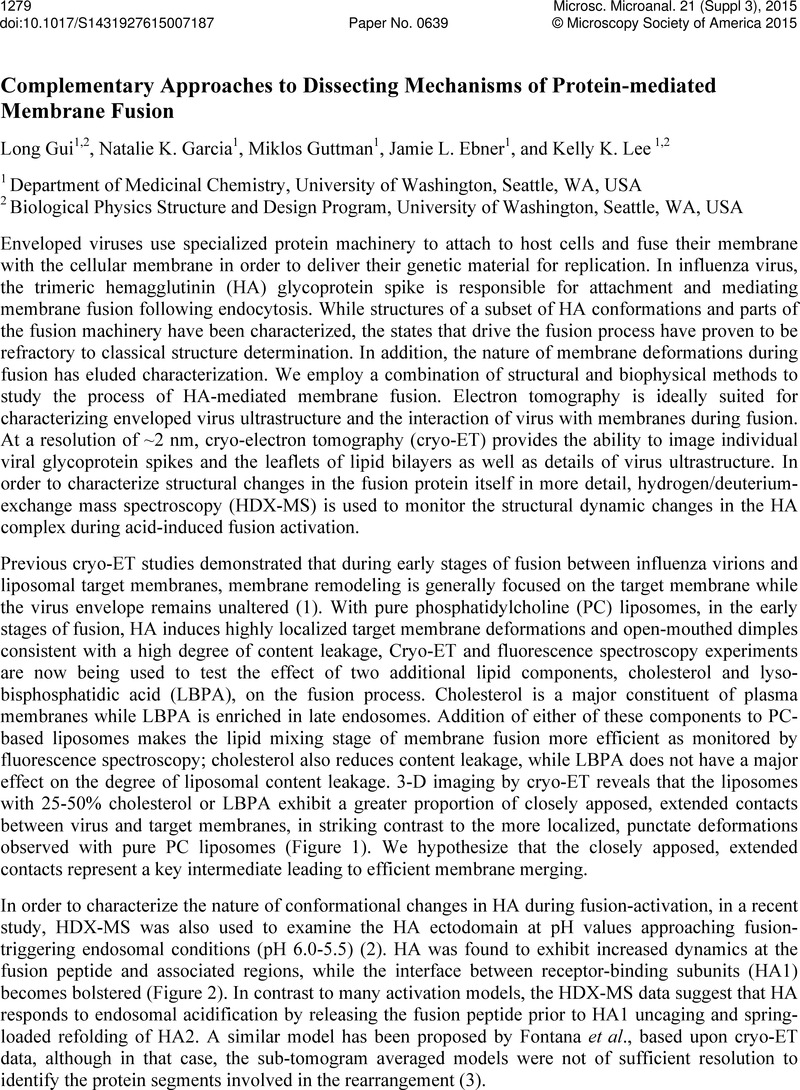No CrossRef data available.
Article contents
Complementary Approaches to Dissecting Mechanisms of Protein-mediated Membrane Fusion
Published online by Cambridge University Press: 23 September 2015
Abstract
An abstract is not available for this content so a preview has been provided. As you have access to this content, a full PDF is available via the ‘Save PDF’ action button.

- Type
- Abstract
- Information
- Microscopy and Microanalysis , Volume 21 , Supplement S3: Proceedings of Microscopy & Microanalysis 2015 , August 2015 , pp. 1279 - 1280
- Copyright
- Copyright © Microscopy Society of America 2015
References
1.
Lee, KK. (2010). Architecture of a nascent viral fusion pore. The EMBO Journal
29, 1299–1311.Google Scholar
2.
Garcia, NK, Guttman, M, Ebner, JL & Lee, KK. (2015). Dynamic changes during acid-induced activation of the influenza hemagglutinin fusion glycoprotein. Structure in press.Google Scholar
3.
Fontana, J, Cardone, G, Heymann, JB, Winkler, DC & Steven, AC. (2012). Structural Changes in Influenza Virus at Low pH Characterized by Cryo-Electron Tomography. J Virol
86, 2919–2929.Google Scholar




